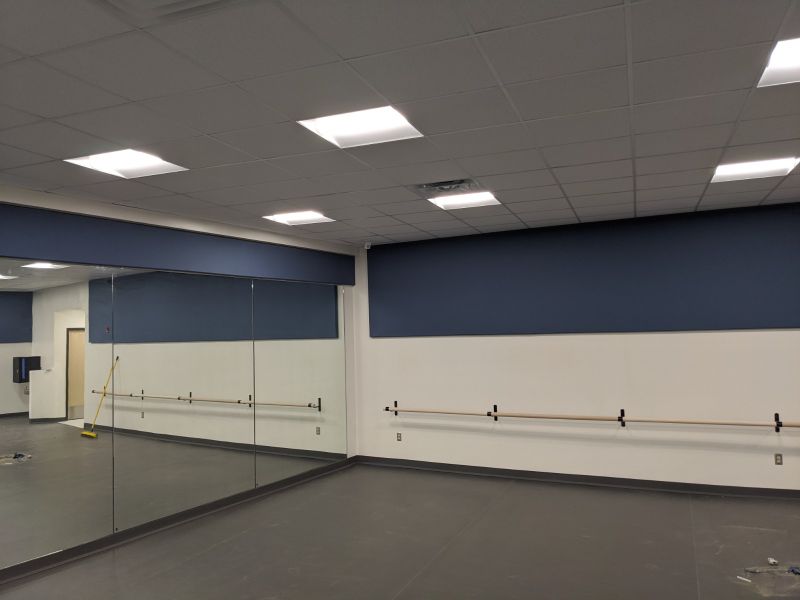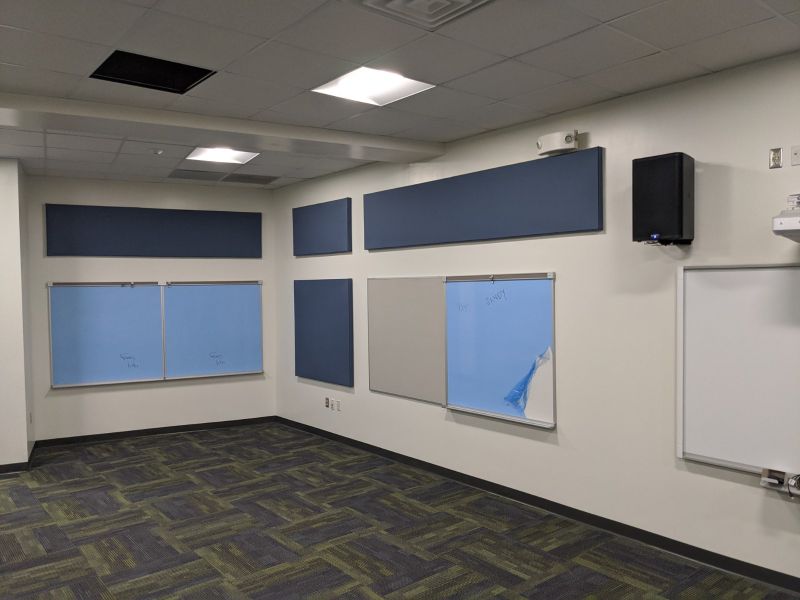Elementary School Acoustic Panels
Sandy Lane Elementary School in Clearwater, FL recently re-structured as a school for the arts. Upon this change being made, the back wing of the school was to be converted into the new Performing Arts Wing for the Conservatory of the Arts. This meant adding new rooms such as band rooms and dance studios.
Each of these new spaces required acoustic treatment as specified by the architect, so an invitation to bid was issued for the work that would be done. Commercial Acoustics bid on and was awarded the job to fabricate and install acoustic panels throughout the different spaces. As a school newly focused on the Arts, they had multiple new spaces in need of acoustic panels. The scope of work included acoustic panels installed in the String Music Room, General Music Room, Dance Studio and Cafeteria.
These rooms would have naturally high reverb times, or RT60, as a result of reflective surfaces such as drywall, hardwood and tile floors and mirrored walls (dance studio). The size of a room can also contribute to higher reverb time, more specifically, larger rooms will have longer reverb times (such as the cafeteria).

When to Use Acoustic Fabric Wall
The acoustic panels needed to be high enough be out of the way of kids reach and chairs, to avoid any dirt or dents. And, many of the panels needed to fit into an exact space, so rather than custom cutting multiple panels, a fabric wall system was chosen.
Stretched fabric wall systems are most common when the client needs a large and exact area of space covered, that would otherwise require custom-cut panels with multiple visible seams. First, a special track system is put in place to set the bounds of the fabric wall. Then, raw fiberglass is fastened to the wall to fill that entire space. Finally, acoustically transparent fabric is attached over the fiberglass using the track resulting in what appears to be one large acoustic panel.
The fabric wall used throughout Sandy Lane was made up of a 2″ thick, 6 pcf fiberglass with a noise reduction coefficient (NRC) of 1.05, and wrapped in acoustically transparent fabric from Guildford of Maine.

The fabric wall was installed in each room and positioned according to the plans. Installation was completed over the course of around 2 weeks by a team of three people. With the acoustic fabric walls in place, the music rooms, dance studio and and cafeteria will now be acoustically comfortable for their expected use.
When considering acoustic panels or fabric walls for your school, be sure to use the Acoustic Calculator to determine how many square feet of acoustic treatment is needed. Contact Commercial Acoustics if design assistance is needed.


